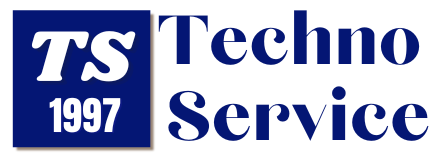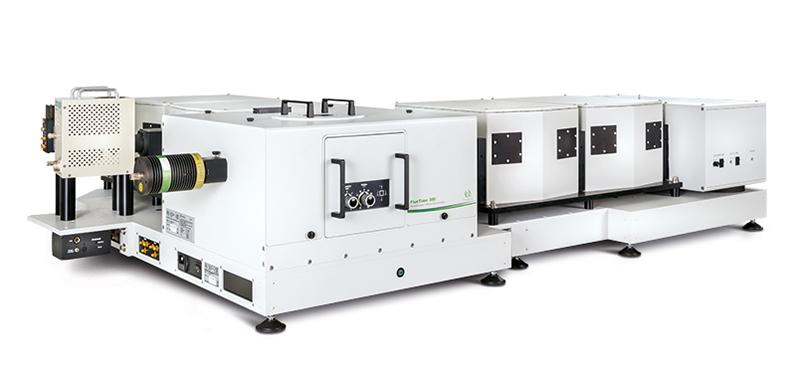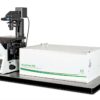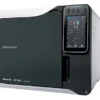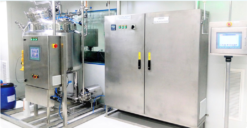High-End Photoluminescence Spectrometer
- Steady-state and time-resolved (TCSPC, MCS) operation mode
- Highly modular and flexible design, optimal for upgradability
- Fully automated system with exact timing from ps to s
- Double or single monochromator in excitation and emission with the unique feature of switching between additive and subtractive in emission
- Superior sensitivity with > 32 000:1 water Raman SNR
- Intuitive acquisition and analysis EasyTau 2 software
The FluoTime 300 is a high performance fluorescence spectrometer for materials science, life science, and photochemistry applications. Our fully automated setup contains complete optics and electronics for recording steady-state spectra as well as fluorescence decays by means of Time-Correlated Single Photon Counting (TCSPC) or Multichannel Scaling (MCS) from a few picoseconds to several seconds. The FluoTime 300 provides superior sensitivity, spectral, and temporal resolution that allow the acquisition and analysis of
- Fluorescence Spectra
- Fluorescence Lifetime Decay
- Phosphorescence Lifetime Decay
- Fluorescence Anisotropy
- Absolute Quantum Yield
- Emission-Excitation Matrix (EEM)
- Time-Resolved Photoluminescence (TRPL)
- Time-Resolved Emission Spectra (TRES)
from UV to IR range. This setup can be equipped with numerous sample holders ranging from standard cuvette and front face to wafer check. The sample compartment is designed to be spacious to provide more flexibility. For measurements under controlled temperatures, PicoQuant offers various solutions depending on the temperature range.
All components are being controlled by EasyTau 2 software. A unique feature of PicoQuant spectroscopy software are its three operation modes:
- Wizard mode provides step by step assistance
- Customized mode enables full control over the instrument
- Scripting mode allows automation of measurement routines.
The FluoTime 300 is an optimal choice not only for routine lab work but also for cutting-edge research fields. Over 450 research articles have been published utilizing the FluoTime 300 in various fields including solar cells, light emitting diodes (LEDs), photocatalysis, upconversion materials, and quantum dot characterization.
